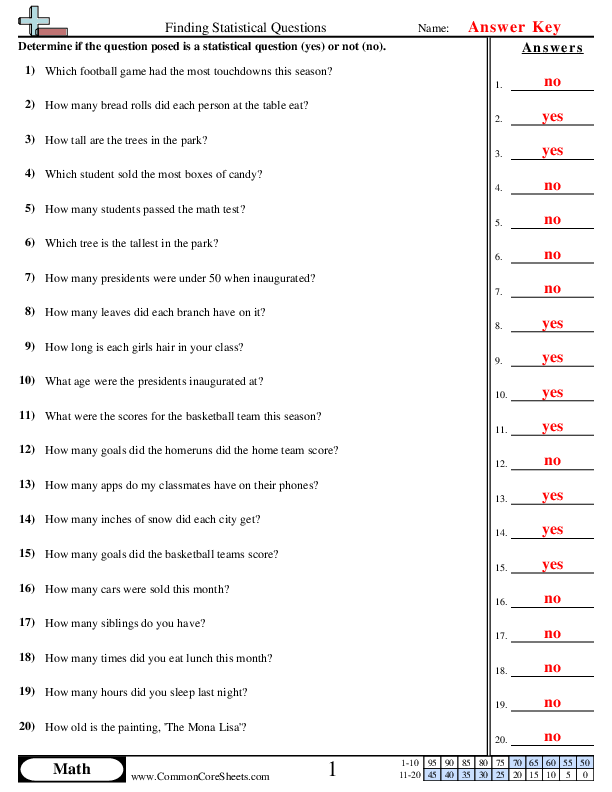Finding Statistical Questions
6sp1


×
Description:
"This worksheet is designed to enhance children's understanding of statistical questions in math. It offers 20 unique problems, ranging from querying numbers of pets in a neighborhood, to analyzing real-world data like monthly car sales. This customizable educational tool helps engage kids in active learning, suitable for both classroom and distance learning contexts. It also has the versatility to be converted into flash cards to facilitate learning through games."

×
Student Goals:
Understanding Statistical QuestionsBy the end of this worksheet, students should have a clear understanding of what makes a question a statistical one. They will be able to recognize and distinguish between questions that solicit statistical data and those that don't. This exercise will allow them to internalize the characteristics of statistical questions, emphasizing on variability, randomness, and data distribution within a specific group or population.Practical ApplicationAs an outcome of this worksheet, students will be equipped with the ability to formulate statistical questions applicable in real world situations. They will learn how these queries can be used in various fields such as sports, weather forecasting, business sales, and popular opinion. This skill can largely influence their critical thinking and decision making, encouraging them to make fact-based conclusions.Data AnalysisStudents will learn how to approach questions analytically. They will be able to identify the type of data needed, how it could be collected and how it should be analyzed to answer each specific query. Moreover, they will understand the relevance of using different methods of analysis depending on the nature of the data collected. This will provide a groundwork for their upcoming mathematical topics involving data and probability.Improvement in Problem Solving SkillWorking on this worksheet will enhance students' problem-solving skill. They will learn to break down complex questions into two or more simpler issues and solve each of them sequentially. The students can then apply this skill in other mathematical problems as well as non-mathematical problems in day-to-day life.
